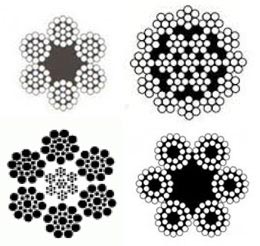
Those in the material handling industry need to value safety above speed because speed often causes injuries, damaged products, and broken cranes or other lifting tools. Besides only allowing highly trained workers to maintain and use these machines, it is vitally important to use the right gear for the jobs: specifically, the material chosen for overhead lifting slings. There are four common materials, which all have unique advantages and disadvantages. The four most common materials include:
· Chain
· Wire rope
· Synthetic web slings
· Polyester Round body slings
Instead of focusing on the distinctions between each material, this article looks at the advantages of chain slings versus synthetic slings. It isn’t to say one is necessarily better than the other, but instead, there are times and applications for chain slings that make them more appropriate than their synthetic counterparts.
What are the advantages of using chain slings?
· Chains are known to resist most abrasions, cuts, and impacts, which means they are more durable than synthetic slings in more intense/extreme environments.
· Chains can be used in a wide range of facilities and applications because they are resistant to UV radiation and resist chemical damage. Not only that but they can also be safely used in environments with dirt and oil.
· Chains operate safely at high temperatures, whereas synthetic slings do not. A chain sling can comfortably operate in a temperature range from 400 F to -40 F. Synthetic slings do not have this ability.
Chain slings have many advantages over other things, but that does not mean chains should always be your first choice. There are times where the other three options make more practical sense.
RELATED READING: